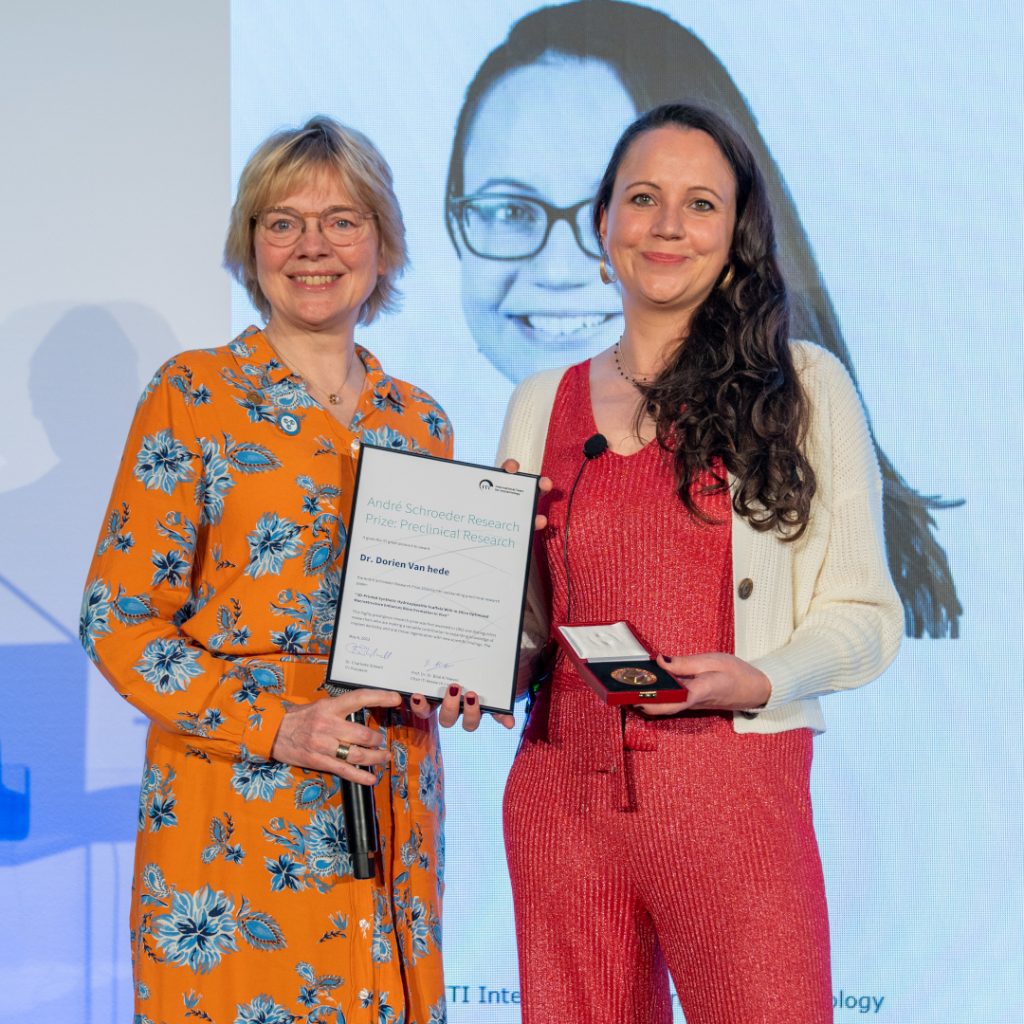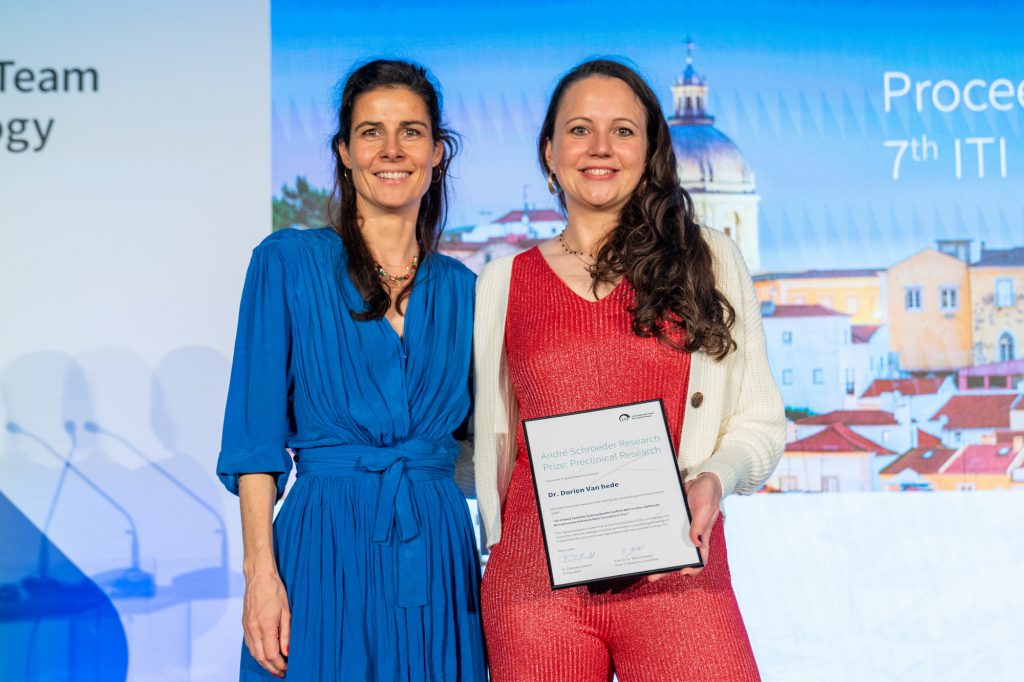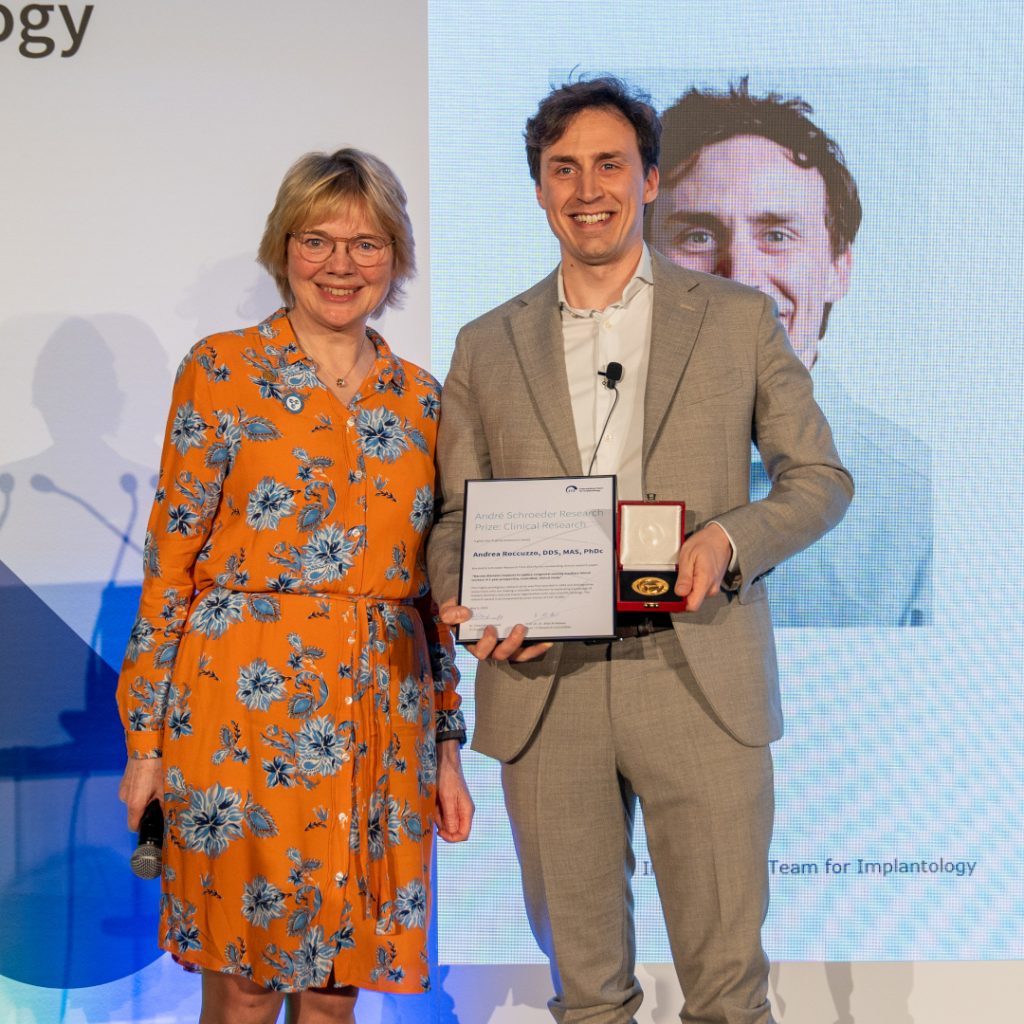With the André Schroeder Research Prizes, the ITI annually singles out two research teams for outstanding work in advancing dental research and development. This year’s winners, Dorien Van hede and Andrea Roccuzzo, were presented with their award at the ITI Annual Conference in Lisbon in May 2023. Below they answer a few questions about their work and what the prize means to them.
The preclinical prize went to biomedical scientist Dorien Van hede PhD for her study entitled “3D-printed synthetic hydroxyapatite scaffold with in-silico optimized macrostructure enhances bone formation in vivo”. Congratulations, Dorien! Can you tell us a bit more about your topic?
Dorien Van hede: The long-term objective of this project is to respond to the need for patient-personalized solutions with improved performance while also avoiding materials of animal origin. I am interested in the development of innovative biomaterials for intra-oral bone regeneration.
And what was the result of your study?
Dorien Van hede: We used computational extrapolation to create a 3D-printed synthetic ceramic scaffold that would induce improved bone regenerative performance in an animal model. The 3D scaffolds were then printed and implanted in animals. Compared to granular biomaterials used in clinics and traditionally designed 3D scaffolds, the gyroidal structure was associated with higher regenerative performance. In addition, this in-silico approach helps to reduce the use of animals in experiments.
What is the next step with this research?
Dorien Van hede: My team – Bingbing Liang, Sandy Anania, Mojtaba Barzegari, Bruno Verlée, Grégory Nolens, Justine Pirson, Liesbet Geris and France Lambert – and I are working towards testing our new biomaterial in patients. We still need to make some improvements, but we are confident. We believe this product could well be a game changer for daily implant practice.


The clinical prize this year went Andrea Roccuzzo DDS, MAS, PhDc, for his study entitled “Narrow diameter implants to replace congenital missing maxillary lateral incisors: A 1-year prospective, controlled clinical study”. How did this study come about?
Andrea Roccuzzo: Back in 2016, Professor Simon Jensen of the Copenhagen University Hospital in Denmark, where I am a Research Associate, invited me to be part of his research team. As the aim at that time was to test the reliability of a newly launched narrow diameter implant in the treatment of patients with congenitally missing lateral incisors, naturally I immediately accepted with enthusiasm.
Where did the research lead?
Andrea Roccuzzo: The team’s (Jean-Claude Imber, Jakob Lempert, Mandana Hosseini and Simon Storgård Jensen) main findings were that the use of narrow diameter implants was as reliable in terms of implant survival rate, peri-implant marginal bone level changes and esthetics as the previous gold standard in cases of limited mesio-distal distance in the maxillary area.
And what implications do these results have for clinicians in daily practice?
Andrea Roccuzzo: Our research proves that in a challenging clinical scenario, such as the replacement of congenitally missing lateral incisors, the use of 2.9 tapered bone level narrow diameter implants presents a safe treatment modality that dentists can rely on.
How did you both hear about the André Schroeder Research Prize?
Dorien Van hede: My supervisor Professor France Lambert at the University of Liège in Belgium encouraged me to apply. I thought to myself “nothing ventured, nothing gained” and here I am!
Andrea Roccuzzo: I’ve been an ITI Member since 2016 so the ITI is a bit like my family. I always promised myself that as soon as I published my research I would apply for the award.
Is it important to you that your research is clinically relevant?
Andrea Roccuzzo: Of course. I have learned from my mentors that every clinical study should try to answer a clinically relevant question and to provide clinicians with clear recommendations. That is precisely what attracted me to this study in the first place.


What personal impact does winning this prize have?
Dorien Van hede: It is a source of great pride for me, my team, and my institution, as well as my family and friends. It is also a great way to gain some international visibility and encourages me to find new research ideas. We have already submitted a new research project to the ITI for funding support and it has been accepted. I am looking forward to starting work on the study.
Andrea Roccuzzo: As a young researcher it is a huge honor for me as well as a wonderful reward for the hard work of the last years. The prize is not an end but a beginning!
Have you published your research? Then reap the fruits of your success and apply for the 2024 André Schroeder Research Prize. Get more information






